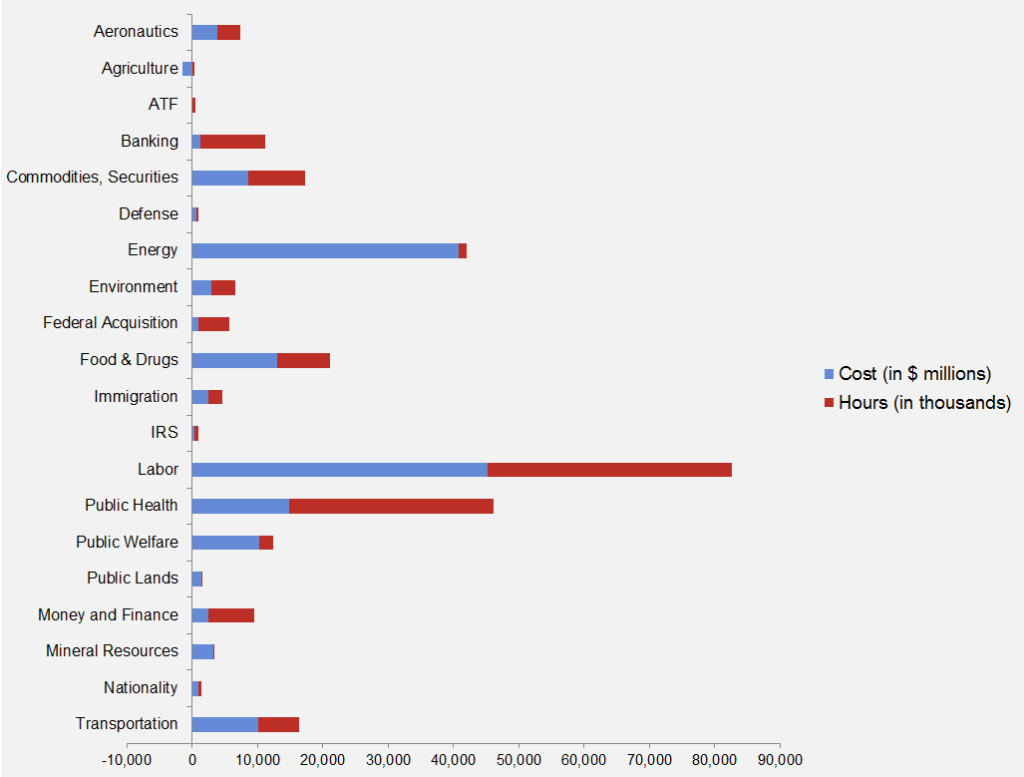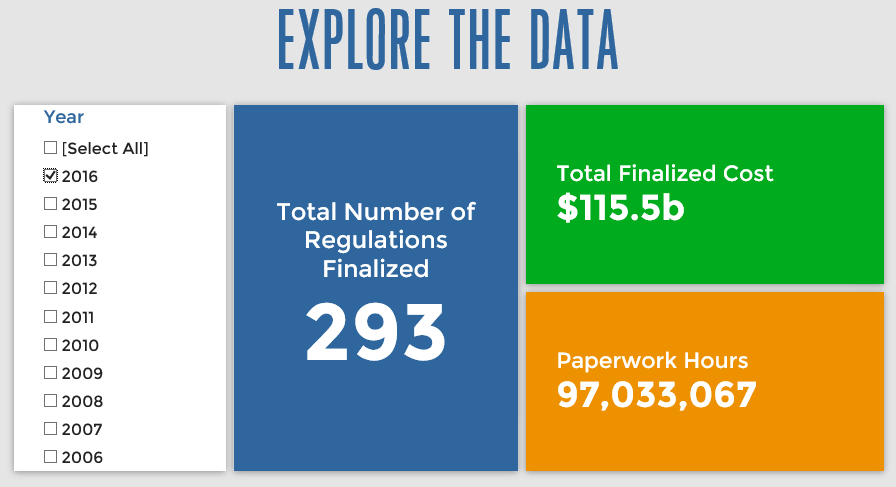Week in Regulation
October 24, 2016
$1.8 Billion in Costs
Regulations addressing tax loopholes, electronic visas, and mortgages led a busy week in regulation. Federal regulators published $1.8 billion in cumulative costs, with $249 million in annual burdens, $299 million in benefits, and 2.3 million paperwork burden hours. In addition, there were $651 million in costs finalized that had been proposed early this year. The per capita regulatory burden for 2016 is $507.
Regulatory Toplines
- New Proposed Rules: 39
- New Final Rules: 95
- 2016 Total Pages of Regulation: 73,014
- 2016 Final Rules: $115.5 Billion
- 2016 Proposed Rules: $48.7 Billion
The American Action Forum (AAF) has catalogued regulations according to their codification in the Code of Federal Regulations (CFR). The CFR is organized into 50 titles, with each title corresponding to an industry or part of government. This snapshot will help to determine which sectors of the economy receive the highest number of regulatory actions.
The Department of Homeland Security (DHS) published the largest rulemaking of the week, a measure to establish electronic Visa updates. Nonimmigrant aliens will need to periodically enroll in the system prior to travel in the U.S. Present value costs are $1.5 billion, with $168 million in annual costs, and $299 million in benefits. The latter derive from strengthened national security, legitimate travel, and fewer costs to immigrants. The rulemaking also adds 1.4 million paperwork burden hours.
The Department of Treasury finalized its “385 rules,” and as AAF highlighted here, the measure was designed to limit “earnings stripping,” where companies use interest payments from U.S. operations to avoid the nation’s punitive corporate income tax. The agency estimates initial compliance costs of $224 million, with $56 million in ongoing costs, and 735,000 paperwork burden hours.
The administration also finalized a Health IT certification program, proposed earlier this year. Strangely, it includes one of the widest spreads for costs AAF has examined. On the low-end, costs are just $170,000; on the high-end, they exceed $650 million. With this incredible range, from barely noticeable to a lot of money, the administration labeled the measure “economically significant.”
Affordable Care Act
Since passage, based on total lifetime costs of the regulations, the Affordable Care Act has imposed costs of $51.6 billion in final state and private-sector burdens and 173.4 million annual paperwork hours.
Dodd-Frank
Click here to view the total estimated revised costs from Dodd-Frank; since passage, the legislation has produced more than 74.8 million final paperwork burden hours and imposed $36.5 billion in direct compliance costs.
Total Burdens
Since January 1, the federal government has published $164.2 billion in compliance costs ($115.5 billion in final rules) and has imposed 132.2 million in net paperwork burden hours (97 million from final rules). Click below for the latest Reg Rodeo findings.












